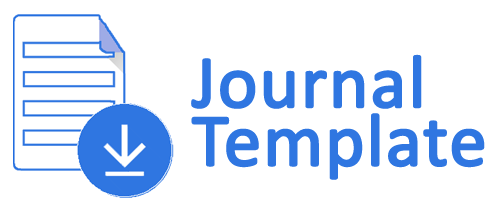IDENTIFIKASI SISWA BERKEBUTUHAN KHUSUS DAN PELAYANAN SEKOLAH INKLUSIF DI KECAMATAN KOTA BLORA
Abstrak
This study uses a survey approach to all children indicated of having special needs in Blora District. The purpose of this study was to identify and map children with special needs based on gender, age, type of disorder, and access to education in their environment. The technique used is saturated sampling with qualitative descriptive analysis method based on interviews with individuals, questionnaires, and library documentation. The results of this study showed the number of children with special needs as many as 75 children with various types of disorders, gender, age. Visual impairment/blind are 8 children (10.6% %), deaf are 10 children (13.3 %), mentally retarded are 38 children (50.6 %), physically disabled are 11 children (14.6 %), mentally retarded are 2 children (2.6 %), double handicap by 6 children (8%). The sexes of men and women are almost equal, with the percentage of male sex being 28 children (37.3%) and female being 47 children (62.6%). Age was grouped into four groups, namely 0-6 years of 15 children (20%), 7-12 years of 27 children (36%), 13-15 years of 13 children (17.3%), 16-18 years of 20 children (26.6%). In addition, access or education services for children with special needs includes access that has been obtained by children with special needs with an age range of 7-18 years and the expected access for ABK aged 0-18 years. Children with special needs aged 7-18 years are 45 children, 33 children (73.33%) have not received education. Children with special needs aged 0-18 years who expect access or services are 49 children, special education is 21 children (42.85%), inclusion is 8 children (16.33%), others (dormitory, financial assistance, operations, skills) are 20 children (40.82%). This article argues that the number of children with special needs who have not been identified is quite large, while educational services are limited. With a review of research on the prevalence of children with special needs and their services, it is hoped that they can be used as a data source for policy makers to develop more massive inclusive schools in Blora City District.
Referensi
Efendi, M. (2016). Pengantar PsticopedagogikAnak Berkelainan. Jakarta: PT. BumiAlcsara
Haryanto. (2010). Pendidikan Keterampilan Kerja Bagi Warga Berkebutuhan Khusus Melalui Pelayanan Keliling di Pedesaan. Jurnal Pendidikan dan Kebudayaan, Vol. 16, Edisi Khusus I.
Marthan, L.K. (2017). Manajemen Pendidikan Inklusif. Jakarta: Depdiknas Direktorat Jenderai Pendidikan Tinggi Direktorat Ketenagaan
Mudyaharjo. (2020). Pengantar Pendidikan Sebuah Studi Awal Tentang Dasar-dasar Pendidikan pada LhnumnyadanPendidilcanDi indonesia, Jalcarta: RajaGrafnido Persada
Rejeki, D.S. & Hermawan. 2010. Pendidikan Inklusi dan Kemampuan Menyesuaikan Diri Anak Berkebutuhan Khusus Terhadap Keberhasilan Sosialisasi. Jurnat pendidikan dan Kebudayaan, Vol. 16, Edisi Khusus
Sunaryo. (2019). Manajetnen Pendidikan Inklusif (Konsepi Kebijakan, dan implementasinya dalam Perspektif Pendidikan Luar Biasa). (http://file.upi,edulDirektori/FIPIJUR. PEND. LUAR BIASA/195607221985031- SUNARYO/Makalah Diunduh -tanggal 9 Januari 2012, 21,45’
Undang-Undang Republik Indonesia Nomor 20 Tahun 2003 Tentang tlistem Pencildikan Nasional. (http:Ihvv•winherent-dikti.netifilesisisdilmas.pdt). Diunduh tanggal 1 Desember 2011, 14. 15
Wardani, I. G.A.1C., Astati, Hernawati, T., & Somad, P. (2019). Pengantar Pendidikan Luar Biasa. Jakarta: Universitas Terbuka
Widati, S., Sunanto, J., Sunalyo, Warnandi, N., & Mulyadiprana, A. (2020). Model Pendidikan Bagi Anak - Berkebutuhan Khusus Yang Miskin di Pedesaan Melalui Pemberdayaan Masyarakat. furnal Pendidtkan dan Kebudayaan, Vol. 16, Edisi khusus







